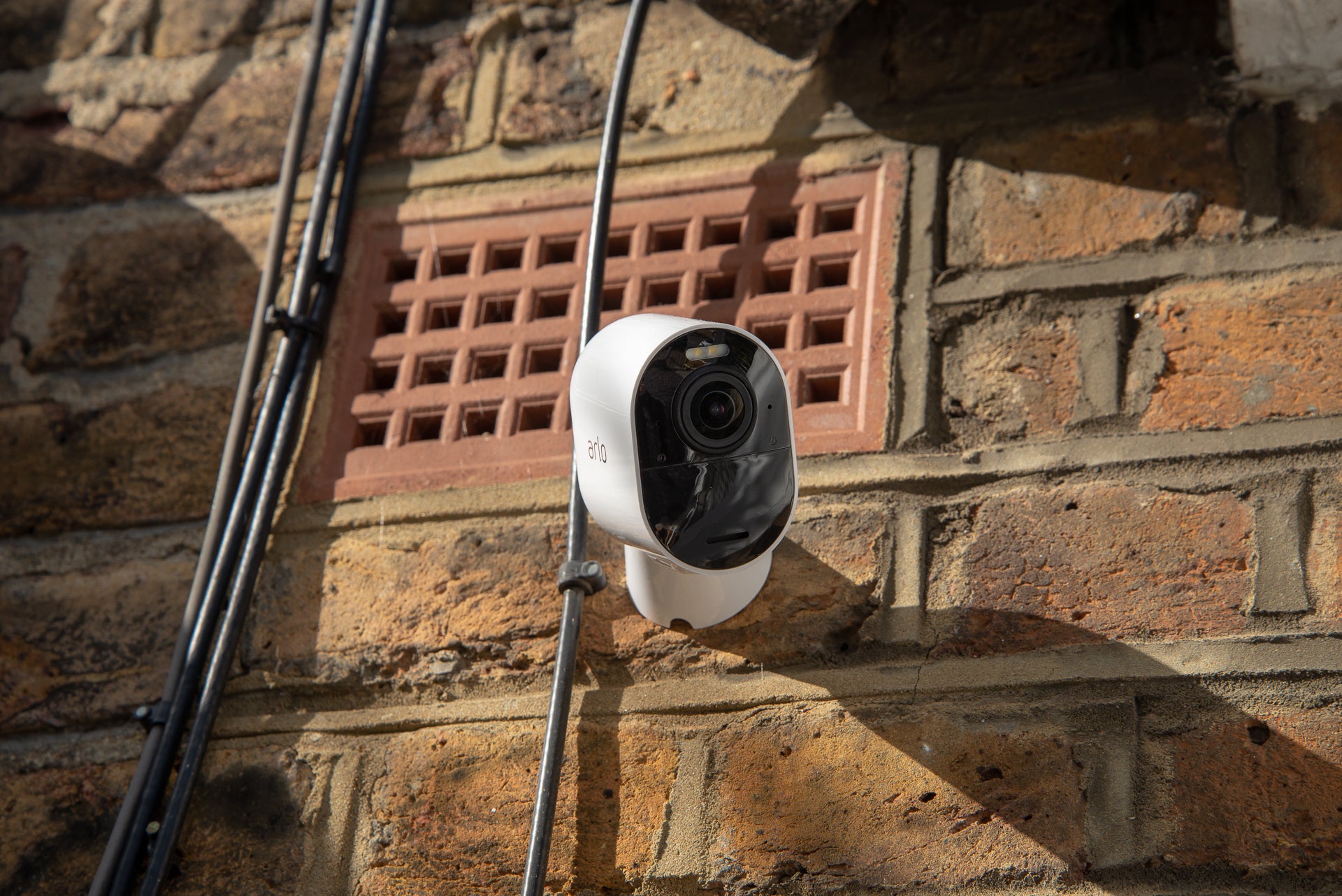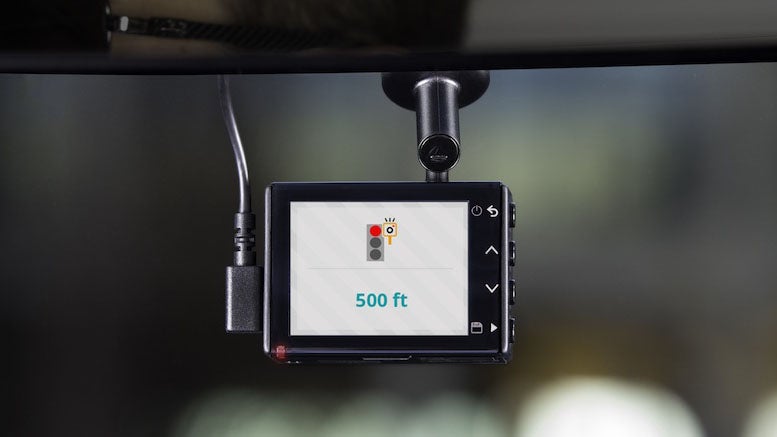Thinkware Q1000 Review
This front and rear bundle promises a lot but it's better suited to daytime driving.
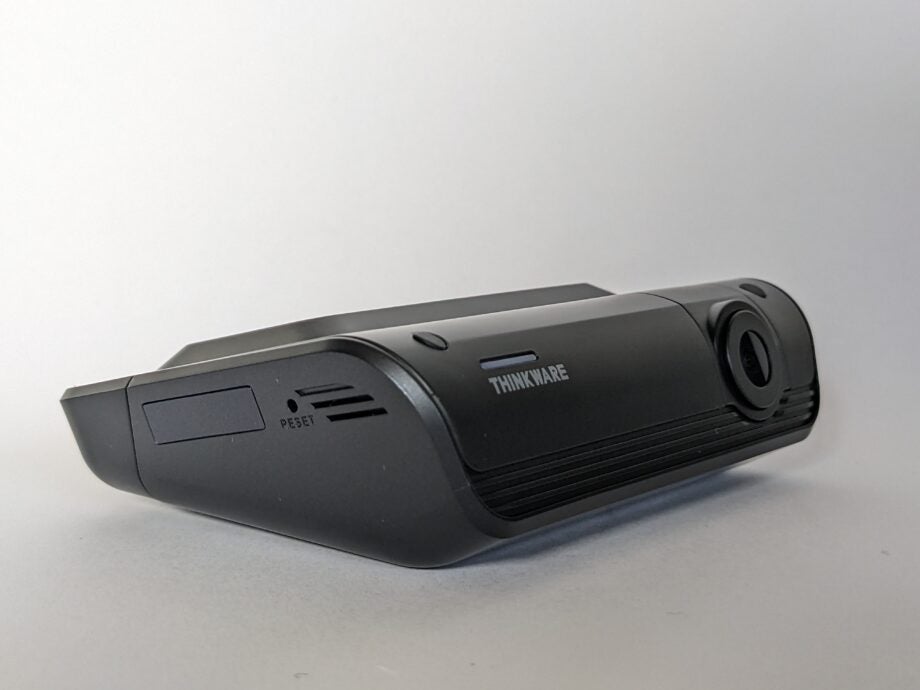
Verdict
Thinkware’s Q1000 front and rear dash cam bundle promises a lot, and delivers on much of it. By day, its 1440p videos are detailed and sharp enough to record any drive, and its safety warnings could help drivers of older cars. The warnings are inconsistent, however, not reliably sounding when you might need them. More significantly, this camera might not grab all the details you need to track down everyone involved in a night-time incident. While it’s not a bad system, it ought to be better at this price.
Pros
- Slimline shape
- High rear resolution
- Advanced driver safety features
Cons
- Expensive
- Unimpressive night videos
Availability
- UKRRP: £359
- USAunavailable
- Europeunavailable
- CanadaRRP: CA$555
- Australiaunavailable
Key Features
- GPSBuilt-in GPS records your exact location as you drive
- Front and rear bundle1440p resolution front and rear dash cams
Introduction
You can buy the Thinkware Q1000 dash cam on its own for about £260, or add a 1440p rear-view camera for another £100.
I’ve tested the front and rear bundle, which for £360 or so gives you 1440p recording front and rear. That’s a lot of money for a dash cam – particularly one that can’t record in 4K – but the Q1000 does have quite a few advanced features. Is it worth it? Here are my thoughts.
Design and features
- Low-profile but fiddly windscreen mounting, plus rear camera
- GPS positioning, parking mode and advanced driver assistance
- 1440p resolution with night mode
When bundled with its rear-view camera, the Thinkware Q1000 is one of the more expensive dash cams you can buy. It’s full of useful features, but it’s worth underlining that it doesn’t have a screen.
In some ways that’s good – screens are a distraction when you’re driving, and it allows the Q1000 to sit comparatively snugly to the windscreen. It’s pretty much the perfect shape to tuck in front of your rear-view mirror, where it’s about as unobtrusive as dash cams get.
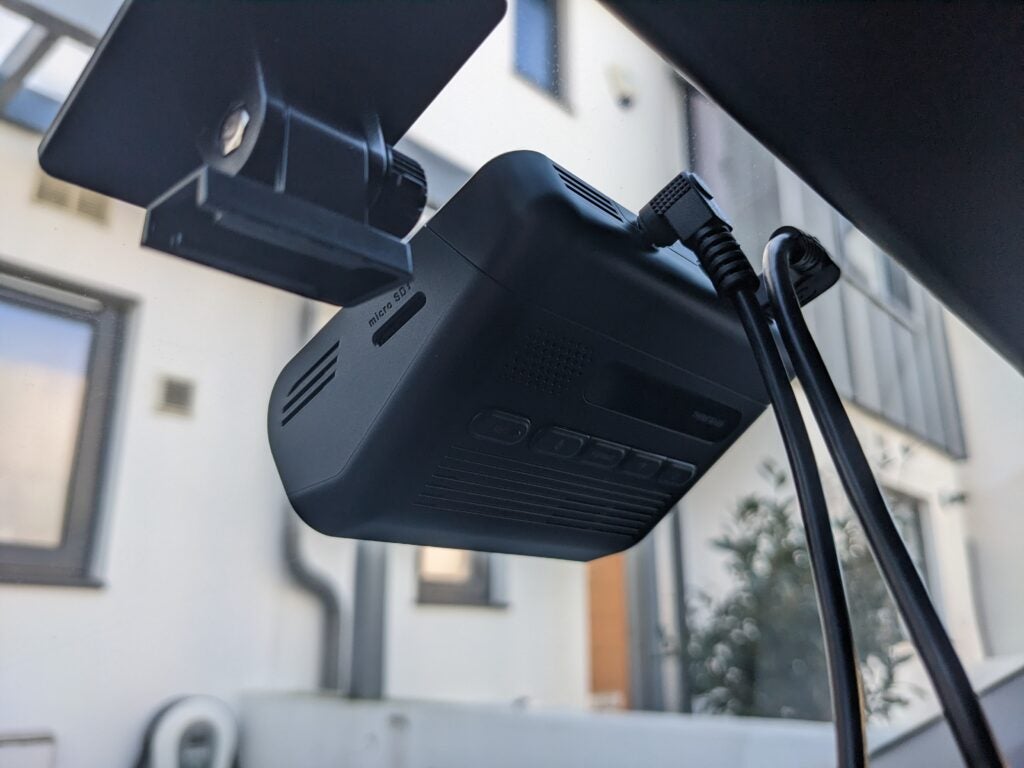
In other ways, the lack of a screen is annoying: there’s no easy way to change this camera’s settings. You either need to remove its memory card and use a PC to load the settings app from it, or link the Q1000 to your phone using its built-in Wi-Fi. You might need a couple of attempts before you get the cameras’ adjustable aim just right.
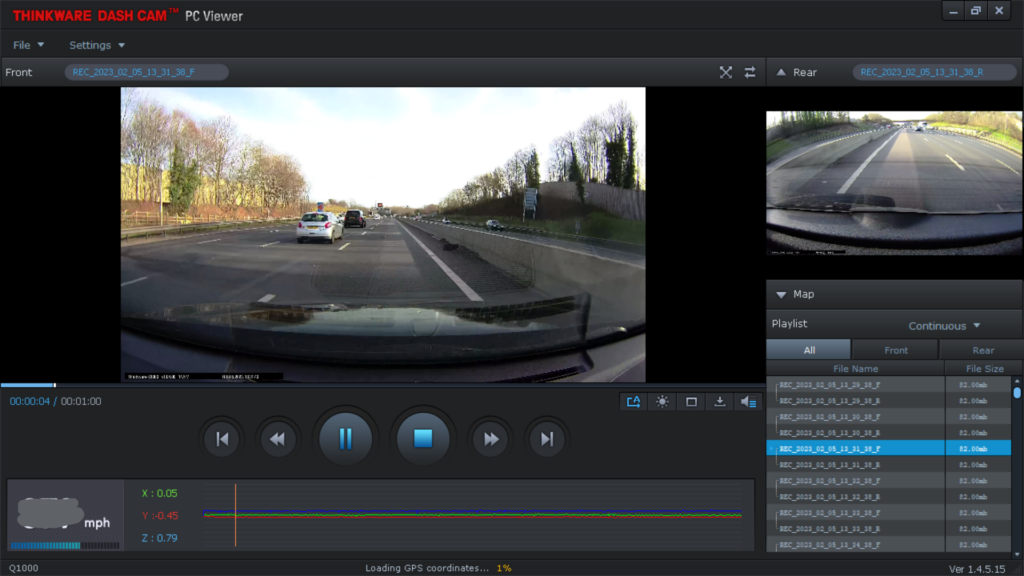
This camera comes with some heat-blocking film, which could be handy in summer due to its windscreen-hugging profile. Neither the front or rear camera mounts on my sample had a pull tab to help remove the cover from their sticky pads, so it took me ages to tease them off. Initially I installed the Q1000 too close to my car’s windscreen sensor box, so I didn’t have space to plug in its rear camera and power cables. Fortunately it comes with a spare pad in case you need to move it.
The Thinkware Q1000 arrives with a 32GB memory card and both a cigarette and hardwiring cable, but no spudger to help you secrete any cables away behind your vehicle’s headlining. Its rear camera connects via a typically generous lead, and happily it’s Micro-USB on both ends, so you could substitute a shorter or longer cable if needed. It can take a bit of tweaking to get the rotatable rear camera pointing at the right angle – or even the right way up. Fortunately, you can flip its orientation in the settings.
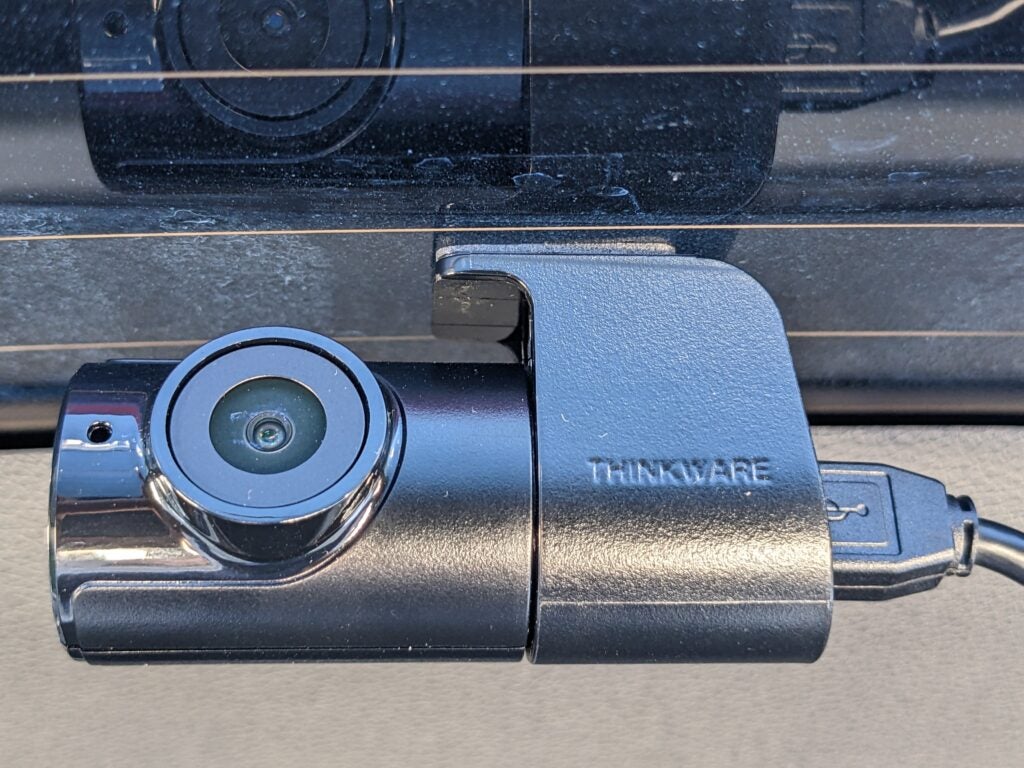
This isn’t the easiest dash cam to position and slot back into its mount, but once installed you shouldn’t really need to remove it again – it’s easy to get at its microSD card if you need it. Both the front and rear cameras have external-facing status LEDs, which can be enabled or disabled from the settings.
Performance and video quality
- Can be very beepy
- Good video by day
- Very disappointing sharpness at night
Connect up this camera, go for a drive and you’ll notice that it likes to beep. Initially this was because its g-sensor is too sensitive by default to bumps while you’re driving, so road imperfections would occasionally trigger it. One particular section of the M25 had it going off continuously. Reducing the sensitivity almost completely fixed this, but there was still the annoyance of hearing ‘Please have a safe drive today’ every time I started the ignition.
Turning on the various driver assistance features created new noises. There’s a knock-knock when you deviate from a lane, and soft beeps to let you know when traffic is moving off. Once I got a more urgent warning as I closed on a slower vehicle.
In theory, all of these could be useful, but the reality is probably less so. I found the lane departure warning typically didn’t sound until I was already well over a white line, and that it could be confused by other cars changing lanes ahead of me. The front vehicle departure and forward collision warning were inconsistent to the extent that I wouldn’t want to rely on either.
I generally found that the equivalent systems built into my car were much more accurate at reading the road. Having warning sounds on a dash cam might be helpful in older vehicles without inbuilt systems, but even then you’d still need to learn to recognise and act on the warning – the camera can’t do it for you.
The only other thing to mention about using this camera is that it has two blue status lights on its rear edge which, if mounted near to your rear-view mirror, can give you the sense that you’re permanently being followed by the emergency services.
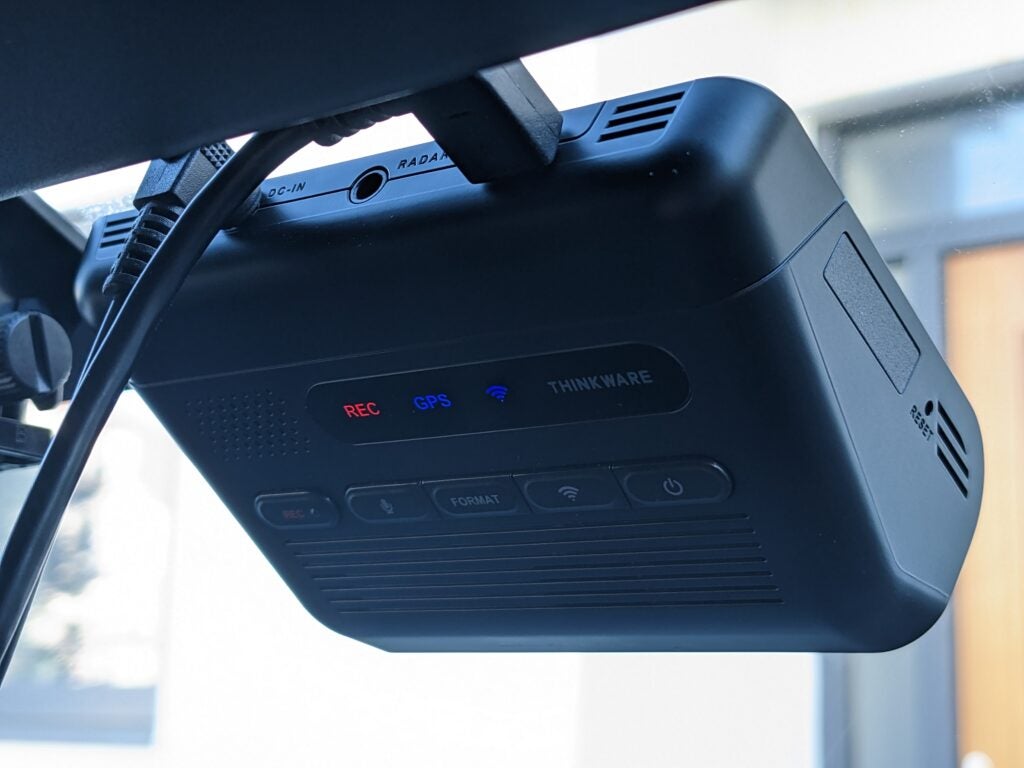
The Thinkware Q1000 recorded good quality video by day. Even with the HDR mode off it coped well with a range of lighting conditions, including vicious low winter sun. Its wide dynamic range allowed it to expose shadowy road surfaces, without the loss of detail such as blue shades in the sky.
Rear video was similarly impressive, with the number plates of following vehicles captured clearly even at some distance.
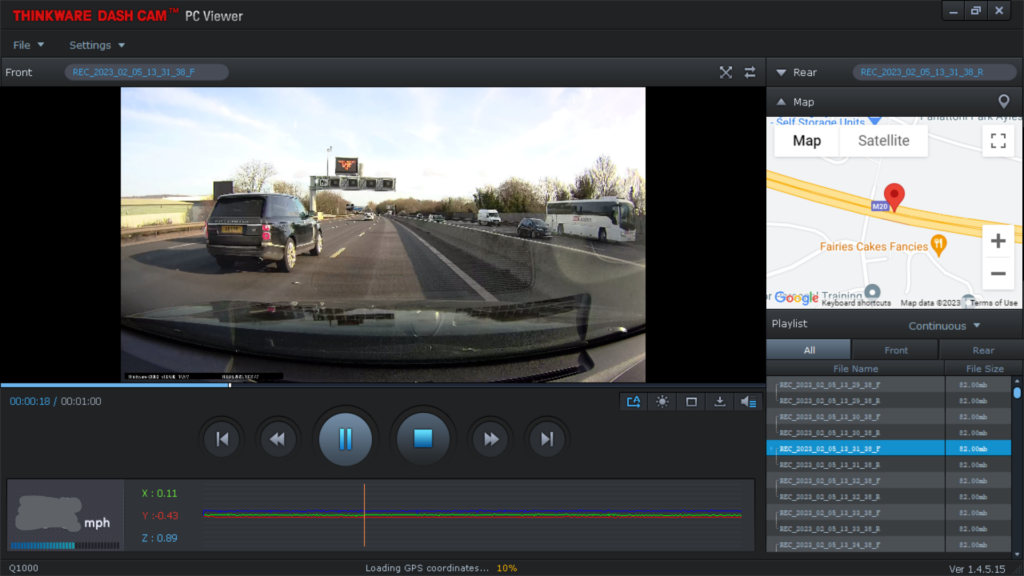
At first glance, night videos were similarly good, with the Q1000 exposing the detail of dimly lit buildings and pavements. However, closer scrutiny showed up an awful lack of sharpness, particularly when my car was turning at junctions.
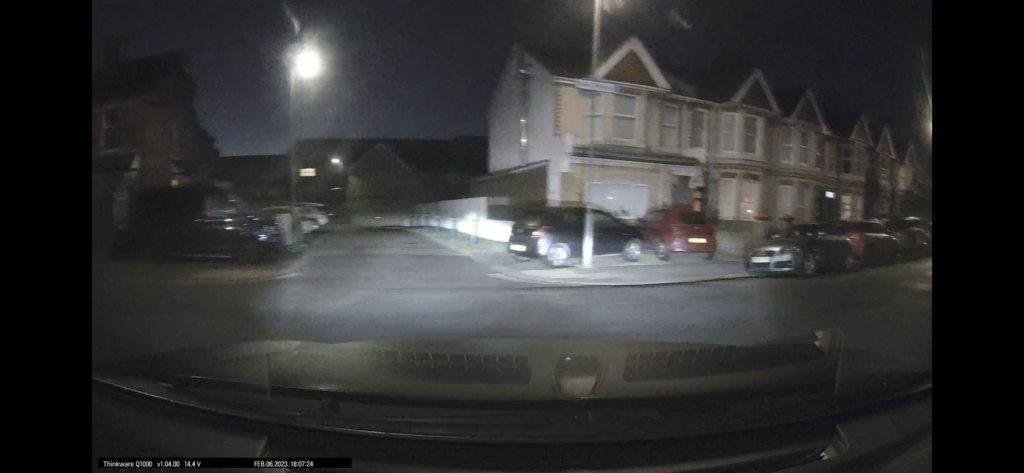
It was tricky to read many parked cars’ number plates, even when my headlights only glanced across them, although it was sometimes possible to make out those lit up by street lamps.
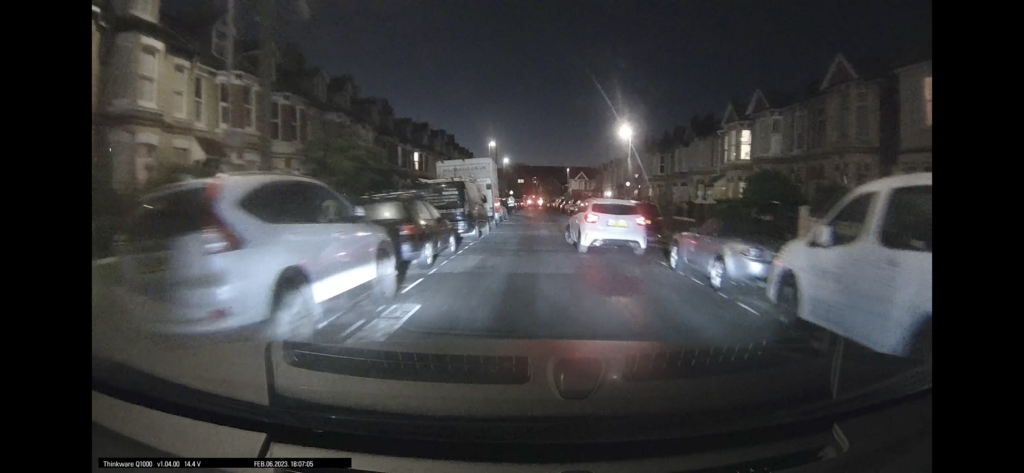
The rear camera was quite poor at night. It captured the shape and colour of cars, but could rarely make out finer details such as a number plate – even when helped by streetlights or my car’s brake lights. Resolving detail at night is hard for even the best cameras, but the results here were very disappointing.
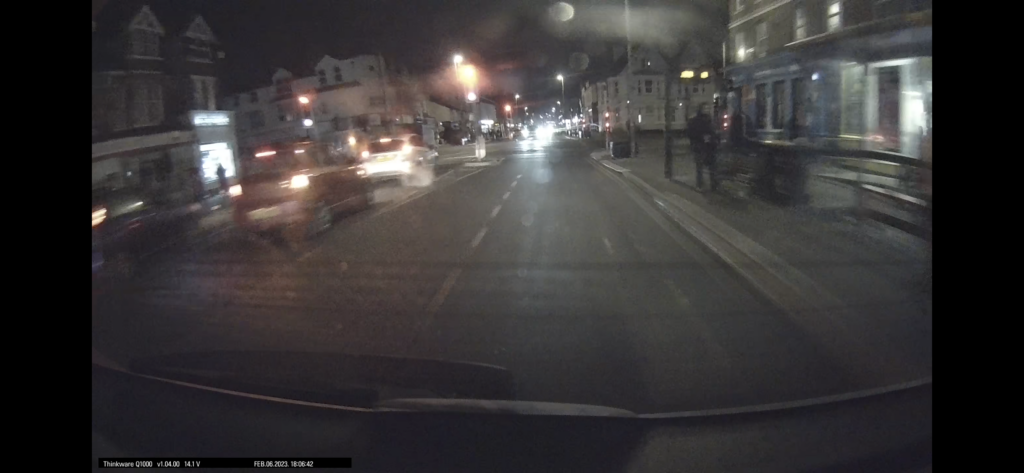
Latest deals
Should you buy it?
You want decent daytime footage:
This dash cam records good daytime video, and its safety warnings could be useful
You want better value and nighttime video:
It’s a very expensive bundle, and the night video just isn’t sharp enough
Final Thoughts
There’s lots to like about the Thinkware Q1000, from its slimline profile to its advanced driver safety features. Unfortunately, it serves up plenty of disappointments, too. It’s a decent front and rear dash cam system if you mostly drive by day, and it could improve your safety in an older vehicle without its own collision avoidance or lane warning systems. However, its warnings are of little value in a newer vehicle, and its night time videos just aren’t sharp enough for the money. If you want front and rear cameras, the Road Angel Halo Pro is better value, while the Nextbase 622GW shoots high quality 4K video.
How we test
We test every dash cam we review thoroughly over an extended period of time. We use standard tests to compare features properly. We’ll always tell you what we find. We never, ever, accept money to review a product.
Find out more about how we test in our ethics policy.
Used as our main dash cam for the review period
We take sample video during the day and night to see how good the footage really is.
We test any smartphone apps to see what additional features are on offer.
We test any additional safety features, such as lange change warning, to see how useful they really are.
FAQs
Yes, but you’ll need to buy an optional hardwiring kit.

